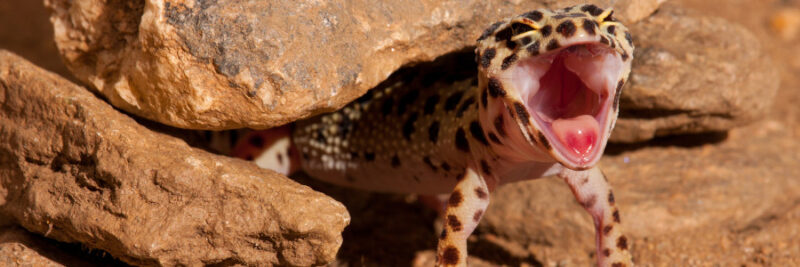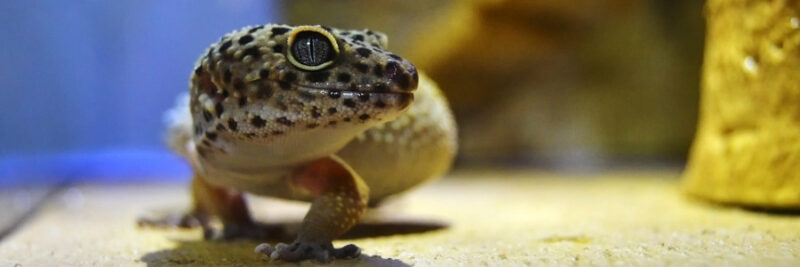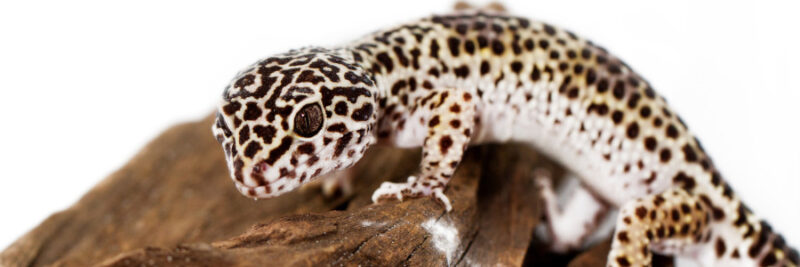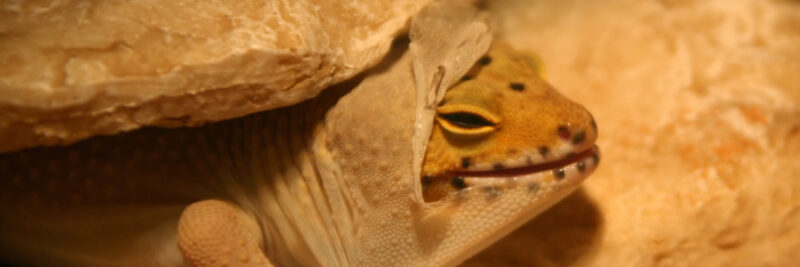Alright, alright – so you’re thinking about getting your first leopard gecko, am I right? Well let me be the first to say you’ve made an excellent choice, my friend! Leopard geckos truly make phenomenal starter reptiles thanks to their hardy constitutions, manageable sizes and docile temperaments. As a first-timer though, I know you’ve probably got a ton of questions racing through that brain of yours faster than a cheetah chasing down a gazelle on the Serengeti plains!
But have no fear – I’ve kept and bred leopard geckos for over 15 years, so consider me your spirit guide on this epic journey into responsible gecko ownership. By the time we wrap up our chat today, you’ll be fully equipped with EVERYTHING needed to provide an utterly spectacular existence for your new slithering companion! I promise to drop some serious knowledge bombs in clear, conversational language, none of that dry textbook nonsense.
So whether you already have your leopard gecko or just obsessively daydream about getting one someday – stick with me and we’ll explore this radical realm together! Let’s start by getting our facts straight about these fantastic lizards from their evolutionary backstory to husbandry basics and beyond. I’ve got a feeling we’re embarking on quite the educational adventure here…
Origins & Nature of the Leopard Gecko

In the reptile world, geckos rank as totally top tier in terms of variety and adaptations. Of the nearly 2,000 unique gecko species slithering the globe, our darling leopard geckos belong to the *Eublepharis* genus originating from the deserts of southwestern Asia. Specifically the arid plains spanning Afghanistan to northwest India. Talk about some premium real estate!
And get this – fossil records indicate proto-geckos first emerged on Earth approximately 100 million years ago alongside dinosaurs during the mid-Cretaceous period! Making them living relics of biological history much older than humans. So next time you gaze into your leo’s mystifying eyes, remember you look upon the embodiment of prehistoric evolutionary brilliance!
In their natural habitat, leopard geckos crepuscular nature means they sleep underground avoiding scorching desert days in burrows before emerging at dusk to hunt. Their patterned skin blends into rocky environments providing stellar camouflage against hungry predators. Another cool adaptive trick? Their wide flat tails actually store fat reserves helping survive lean times. Clearly we deal with some seriously well-equipped lizards here!
But even if modern leopard geckos no longer battle coyotes in the Gobi sand seas, they still retain innate behaviors and needs we must provide proper care to replicate. So let’s jump into replicating their wild domain!
Constructing Optimal Leopard Gecko Habitats

While leopard geckos require relatively simple housing preparations especially compared to exotic tropical herps, we can’t throw them just anywhere and call it a day. Successful replication of their arid ecosystem centers upon a few key considerations:
Enclosure Type
Standard glass terrariums or front-opening plastic vivariums work well for juveniles while larger adults need minimum 20-30 gallon tanks. Always select longer floor space over tall heights. Secured screen tops allow crucial ventilation. Custom builds enable bigger dimensions when you level up!
Substrate Selection
Several loose substrate options like paper towel, reptile carpet, eco earth coconut fiber and slate tile offer suitable leopard gecko bedding. Just NO sand or tiny particulates risking impaction if ingested while hunting feeders!
Temperature Regulation
Unlike us mammals, leos can’t self-regulate internal temperatures and rely on external heat sources. Provide lateral thermal gradients using under tank heating pads spanning 1/3 of the floor space attached to a thermostat maintaining 88-92 degrees. No hot rocks!
Moist Hideaways
We must mimic the cooler, damp underground burrows leopard geckos shelter within despite their arid homeland. Offer a humid hide box filled with wet moss for hydration and shedding assistance.
Crowded Clutter
Maximize horizontal space with ample ground hides, platforms, cork tubes, fake foliage, branches, etc. Beyond security, cramming their crib with enrichment accessories stimulates natural behaviors and exploration!
Lighting Configurations
As nocturnal lizards, leopard geckos require no special UVB lighting. Instead rely on ambient room lighting during daytime hours with total darkness at night supporting healthy circadian rhythms.
See – easy reptile Feng Shui once we understand their habitat priorities! But an exotic pet can’t thrive on environmental ambiance alone. We need some serious chow time next!
Feeding & Hydration Fundamentals
Here’s an interesting evolutionary factoid – unlike carnivorous snakes, leopard geckos actually belong to a select group of predominantly insectivorous lizards owing their classification to unique teeth, jaws and digestive anatomy specially designed to consume creepy crawlies!
We need to offer daily variety reflecting their biology including:
- Crickets
- Mealworms
- Superworms
- Waxworms (limit – high fat)
- Roaches
- Calciworms
And so on down the bug buffet line! Gut load feeders with lettuce, carrots, sweet potatoes to max out nutritional content. Always coat with calcium + vitamin powders for optimal bone/muscle health since indoor lighting lacks natural sun supplementation.
For juveniles under 1 year old, provide appropriately sized feeders daily about the width between their eyes. Adults only require insects every 2-3 days. Avoid overfeeding obesity!
Supply shallow water bowls cleaned daily as leopard geckos tend to defecate where they drink. Unlike many reptiles, leos rarely recognize still water and benefit from gentle bowls allowing tongue lapping. Consider misting the enclosure daily as desert species originate from monsoon environments with seasonal rainfall. Give them the spa treatment!
By fully recreating dietary diversity and hydration sources, we fuel leopard gecko engines optimally for energy, growth and longevity! But just as crucial as physical provisions? Supplying proper mental/social enrichment averting issues like cage aggression. Let’s get social!
Handling & Behavioral Considerations

Alright so full disclosure – leopard geckos aren’t exactly dispensing high fives, snuggles or singing campfire karaoke with their owners. We need some real talk about anthropomorphizing reptiles here! Unlike furry mammals, these cold-blooded critters operate predominantly on instinct lacking higher analytical cognition or social bonding drives.
HOWEVER, intelligent interaction strategies DO reduce cage aggression and support healthier lizard behavior through trust built via consistency and respect. Note I said “intelligent” interaction though – no harassing your leo for amusement! Here is my ideal game plan:
Acclimate Slowly
Intentionally move lethargically when first introducing hands or removing geckos from enclosures. Sudden movements risk triggering defensive “you’re gonna eat me!” responses even from normally docile babies. Proper early acclimation prevents future hand shyness.
Keep Handling Brief
Limit direct physical interaction to less than 5 minutes especially for juveniles. Monitor for stress signs like thrashing tails or panicked breathing. Better leave them wanting more than overwhelm their tolerance!
Consider supervised “free roam” exploration exercising natural movements. Just leopard gecko proof any exit points first!
Routine Hand Feeding
Nothing builds trust quicker than positive reinforcement via favorite snacks! Deliver insects by hand routinely but discontinue chasing rejected feeders stressing them.
Minimal Disturbance
Resist overhandling, especially after feeding to allow digestion. And NEVER wake a sleeping leopard gecko! Value their space and restful state.
Does this advice feel repetitive? Good! Consistency equals confidence for leopard geckos. By respecting space needs and predicting gentle handling, leos learn to associate owner presence with security, not threats. Our primary goal = supporting natural behaviors through intuitive interaction strategies centered upon THEIR reptilian mindset first. Value modest handling goals over imaginary snuggle agendas and mutual harmony shall reign in the terrarium kingdom!
Speaking of kingdoms…how about we level up and talk “advanced” leopard gecko endeavors like communal living and breeding?
Advanced Leopard Gecko Keeping Considerations

Perhaps you brought home just one darling leopard gecko but now find yourself completely captivated by their inquisitive personalities and designer patterning. Welcome to the club, friend! This addictive obsession afflicts the best of us in the reptile realm!
Soon we imagine filling entire rooms with elaborate display setups lushly landscaping like a gecko-ruled Garden of Babylon. Visions of designing mega mansions to shame Mariah Carey’s estate dance through our minds. We catch ourselves browsing leopard gecko breeder forums late at night marveling at delicate morphs and rare locales.
How do we balance burgeoning passions with reasonable husbandry? Consider these next level options after mastering beginner basics:
Responsible Multi-Lizard Madness
Yes, select calm tempered specimens CAN thrive “communally” housed together in larger enclosures 75+ gallons assuming 2+ hides per gecko. Always introduce young and monitor for bullying. Females do best together over territorial males.
Custom Breeding Projects
If ready for baby leopard geckos, place proven gentle breeders together during seasons following proper conditioning. Never house two mature males – they battle viciously to the death for mating rights!
Morphology Mania
Love Those vibrant endemic Tremper albino strains? How about patternless snakeskins or speckled blizzards? Responsible specialty breeders craft astonishing phenotypes sure to destroy your savings!
Record Breaking Giants
Think standard leopard geckos seem puny? Seek out the hissing Godzilla super giant strains boasting 12 inch lengths and 90 gram weights straight beastly!
Does scaling up production with morphs and massive geckos compel you? I caution casually bordering this advanced arena without extensive continued research, species dedication and husbandry mastery – novice negligence kills.
Now I realize after diving deeply through all this diligent leopard gecko care guidance, a few key questions likely still bounce around your mind so before we wrap up, let’s briefly tackle the biggest FAQs for clarity:
Frequently Asked Questions
Most reach 6-10 inches fully mature around 10-12 months old. Largest 'giant' breeds however stretch over 12 inches nose to tail!
Yes, but limit handling to 5 minutes max, go slowly and never grab sleeping geckos suddenly! Gentle routine interaction builds trust.
Offer a moist hide box and multiple warm dry hides allowing snug burrowing contact along the heated tank region.
No supplemental night heating needed if room temps remain above 65 degrees. Simply turn off all light/heating systems allowing natural drops supporting healthy sleep cycles!
Alright my legless loving friends our ideal beginner leopard gecko survival guide quest concludes! Hopefully you feel fully floored with fundamental concepts to flourish wildly into responsible gecko guardianship greatness! Never hesitate contacting me directly with further questions – our scaled buddies deserve no less than our lifelong learning commitment. To understand reptiles is to respect reptiles!
